

The Heart of Mathematics (Valentine's Day Heart)
by
Amanda Newton
Sometimes referred to as the "Hallmark Holiday," Valentine's Day has become a national holiday for many parts of the world including the United States. A lot of us don't realize that the day is actually/originally called St. Valentine's Day, but is usually shortened to just Valentine's Day. It is a time of exchanging cards, candy, and flowers all in the name of love. There is even candy-shaped hearts just for the day (sweethearts) with messages of love and affection written on them! The day is named after just who you would expect - Saint Valentine. However, the Catholic church has found three saints that go by Valentine, so no one is completely sure which saint the day is named after. The day has been celebrated even in ancient Roman times, but the origin is not known for sure. There are countless legends of how the day came to be and whom the day was named after. One of my favorites is that Valentine was a Roman priest. Emperor Claudius II outlawed marriage for men so he could make sure they focused solely on becoming a great soldier. Valentine was outraged by this injustice and began marrying couples in love in public. When his practices were discovered, he was ordered to be put to death. In the jail he was sentenced to before he was killed, he fell in love with a young girl and his last letter to her was signed "From your Valentine," a common expression still widely used during the special day. (For more legends and the full story see http://www.history.com/topics/valentines-day).
So what does this have to do with MATH?!!! The mathematics of Valentine's Day is the heart. Did you know that the heart can be found in the graph of a mathematical equation? We are about to make a valentine's day card accessible to everyone and once again show that mathematics is inescapable in life, whether you choose to address it or not, it is there. To do this, let's first see our starting point. Start out by graphing an ellipse with a center at the origin. I simply graphed the basic parent graph:
![]()

Any ideas of how we are going to make a heart yet? I want to reflect this same ellipse about the y-axis. I can do that by changing the sign of the xy in the equation:

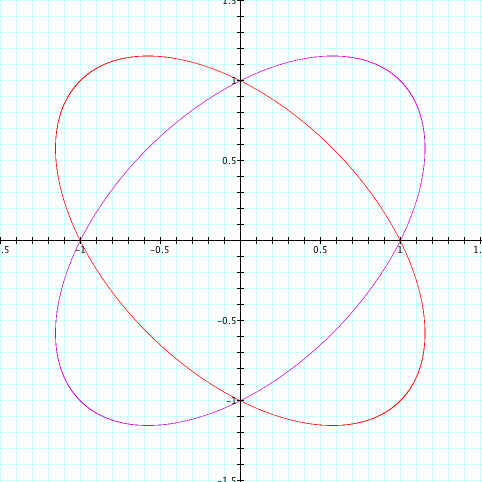
Do you see the heart(s)? The upright heart is bolded in black below:
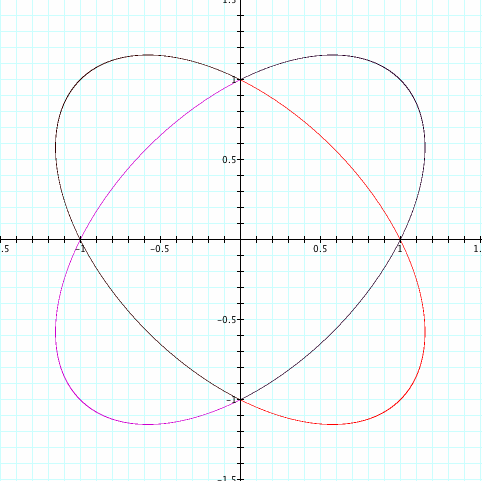
Are there any more? How many?
Now we need to find a way to only show the bolded part above. We are almost ready to make a heart, but we need the red and pink pieces to disappear. How do we do this? White-Out works if you're careful sure, but let's try this mathematically...we need the original parent graph reflected over the y-axis, but only for values where x>0. Sound familiar? IT SHOULD! We are talking about the beloved absolute value function. Where should we put this sign in our equation? Think about what we want reflected - the x values. Therefore, our equation will be: ![]() . Giving us our final product:
. Giving us our final product:

Now that we have a formula for our heart, let's manipulate it to see the different forms/types of hearts. How can we stretch the top curves of the heart?
By changing the coefficient of ![]() , in the equation we get the different graphs below:
, in the equation we get the different graphs below:
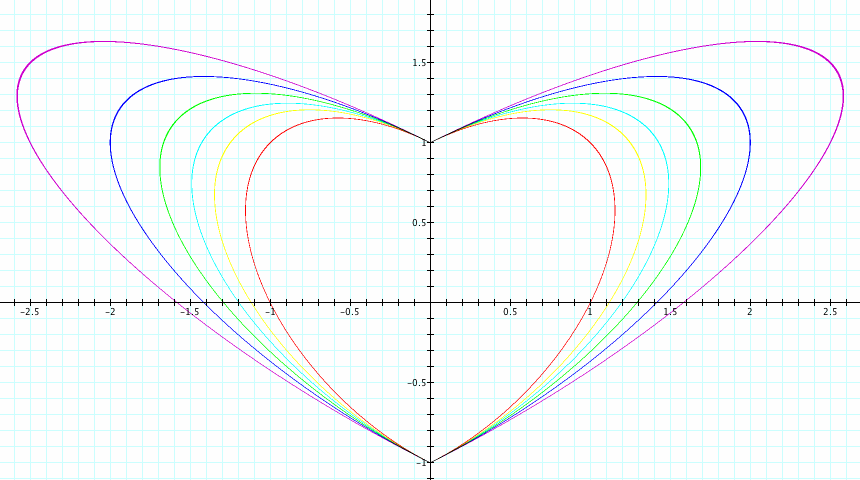
If we change the coefficient of ![]() we obtain the variations:
we obtain the variations:
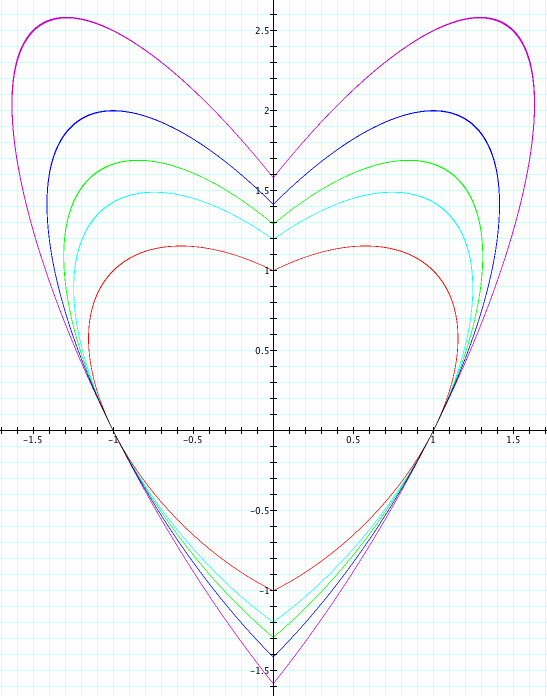
When we change the coefficient of ![]() we obtain...
we obtain...
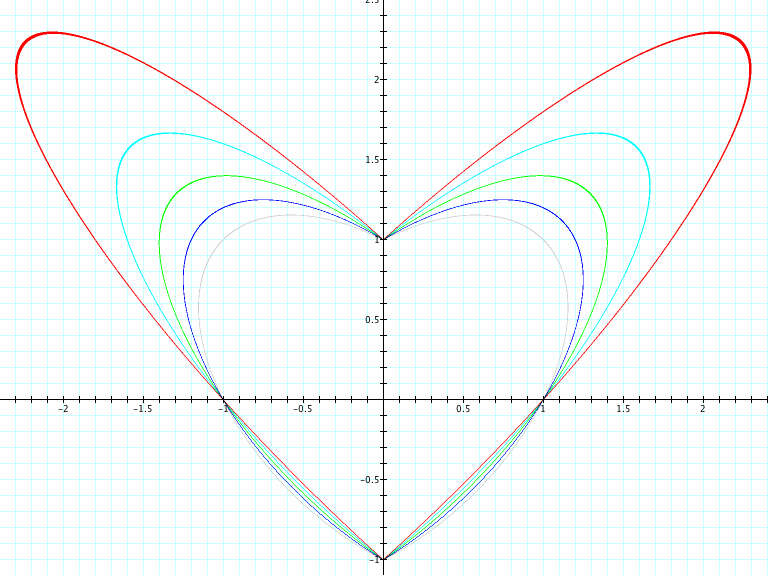
Lastly, let's try to change the 1 that we set the equation equal to (on the right-hand side of the equal sign):

Do you have a favorite heart from the images above? Mine is the green heart from the 1st set taken from the variations of the ![]() coefficient. We have now made all the arrangements and variations of the heart making a perfect gift Valentine's Day. Simply print the image below, and any math lover will be blown away!
coefficient. We have now made all the arrangements and variations of the heart making a perfect gift Valentine's Day. Simply print the image below, and any math lover will be blown away!

Made from a "perfect" heart.